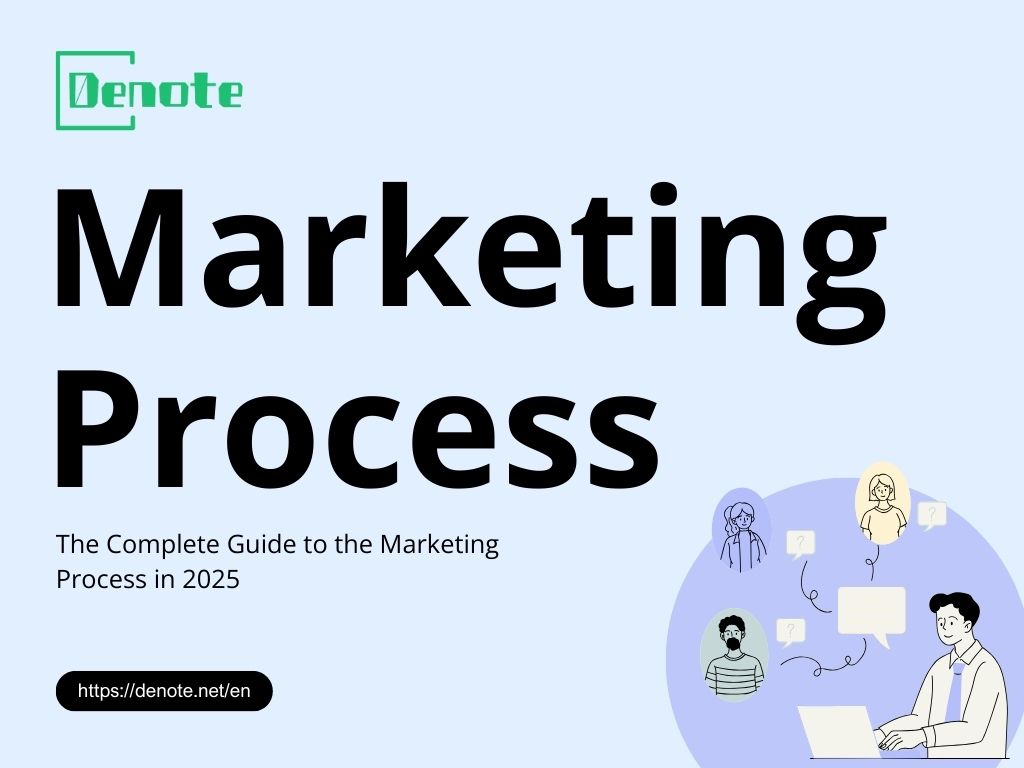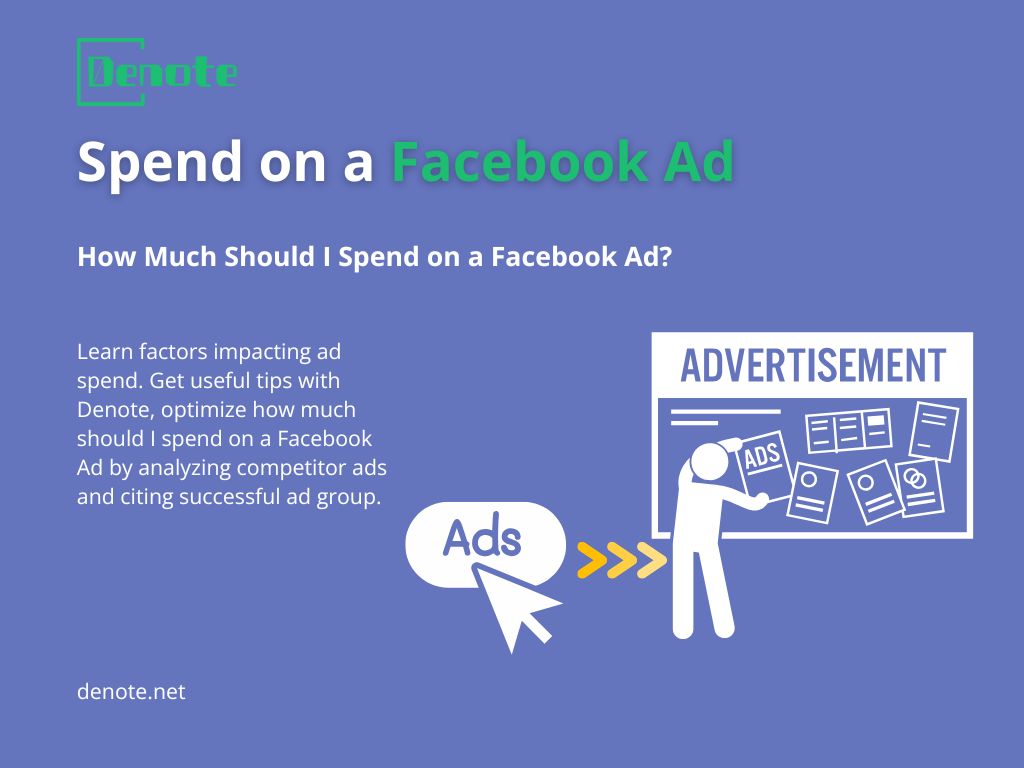What is an Ad Tracker? A Complete Guide in 2025
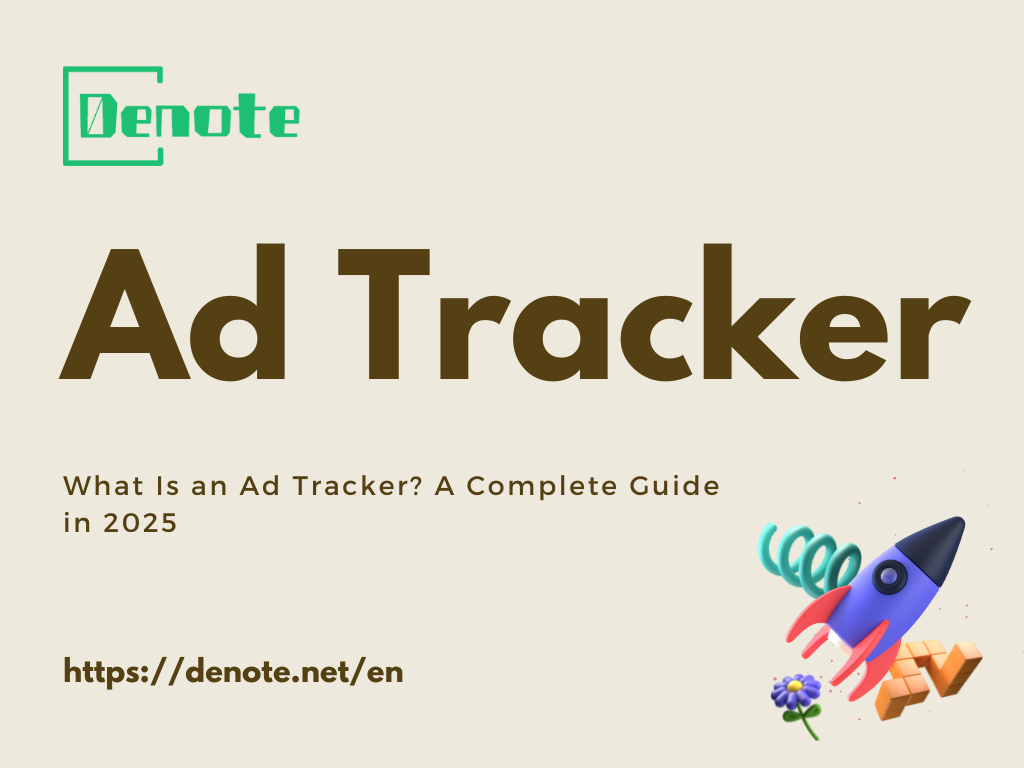
What Is an Ad Tracker
In the ever-evolving world of digital marketing, data is the new gold, and an ad tracker is your treasure map. But what exactly is an ad tracker? Simply put, an ad tracker is a tool or technology used to monitor, analyze, and optimize digital advertising campaigns. It helps you answer the most important questions: Did someone see your ad? Did they click on it? Did that click turn into a sale?
An ad tracker can be as simple as a URL with tracking parameters, or as complex as a real-time dashboard integrating dozens of platforms and campaign metrics. Think of it like the black box of your marketing plane — it records everything that happens between ad display and user conversion.
Why Ad Tracking Matters in 2025
In the context of 2025, the digital advertising environment has grown exceedingly complex and fragmented. Advertising now spans diverse platforms, including TikTok, Google Shopping, and even immersive placements within the metaverse. This ubiquity of ads across channels underscores the critical need for effective ad tracking mechanisms.
Contemporary ad tracking is not a mere accessory; rather, it constitutes an essential component of any data-driven marketing strategy. By leveraging advanced tracking tools, marketers can discern which creative assets yield meaningful engagement, identify underperforming channels, and understand the role of various touchpoints in driving conversions. In an era where performance metrics and return on investment dominate decision-making, the implementation of robust ad tracking systems is indispensable.
Who Uses Ad Trackers
Ad trackers have become ubiquitous across the digital advertising landscape, utilized by a wide spectrum of users—from independent content creators to large-scale enterprises such as Fortune 500 companies. To elaborate:
- Digital marketers actively overseeing pay-per-click (PPC) campaigns
- Affiliate marketers managing diverse offers and multiple traffic channels
- E-commerce organizations striving to maximize return on ad spend (ROAS)
- Marketing agencies coordinating client performance metrics across numerous digital platforms
- Product managers assessing the impact of new feature launches or experimental growth strategies
Even social media influencers increasingly employ streamlined ad tracking solutions to evaluate the effectiveness of sponsored content. Tools like Denote have significantly simplified the process of monitoring creative performance across a variety of digital channels, further democratizing access to sophisticated advertising analytics.

How Ad Trackers Work
At the core, an ad tracker collects data at different touchpoints — impression, click, conversion — and stitches it into a story of user behavior. When someone interacts with your ad, trackers use technologies like cookies, pixels, and UTM parameters to record those actions.
Once the data is collected, it's processed and visualized in dashboards. These insights help you make better decisions: pause underperforming ads, allocate more budget to winners, or tweak your landing page to improve conversions.
Tracking Pixels and Tags
Imagine a tiny invisible spy embedded in your website — that’s a tracking pixel. When someone visits a page or takes an action (like adding to cart), this pixel fires and sends data back to the ad platform.
Tracking tags, on the other hand, are snippets of JavaScript that allow platforms like Google Tag Manager to fire specific events (page view, sign-up, purchase, etc.). Together, pixels and tags act like your digital surveillance team, silently reporting every move.
Link Redirects and UTM Parameters
Ever seen a URL with a string like ?utm_source=facebook&utm_campaign=summer_sale? That’s a UTM parameter, and it’s one of the simplest forms of ad tracking.
Link redirects, often used in affiliate marketing, send users through a tracker URL that logs the click before redirecting them to the final destination. These tools help answer the age-old question: which ad actually drove that sale?
First-Party vs Third-Party Tracking
- First-party tracking means the data is collected and stored by your own website. It’s more privacy-friendly and increasingly important in a cookie-less world.
- Third-party tracking involves using external cookies or scripts to track users across sites. Due to privacy regulations and browser changes, this method is becoming less reliable.
Brands in 2025 are shifting to first-party solutions while using tools like Denote to track creative-level data without infringing on user privacy.
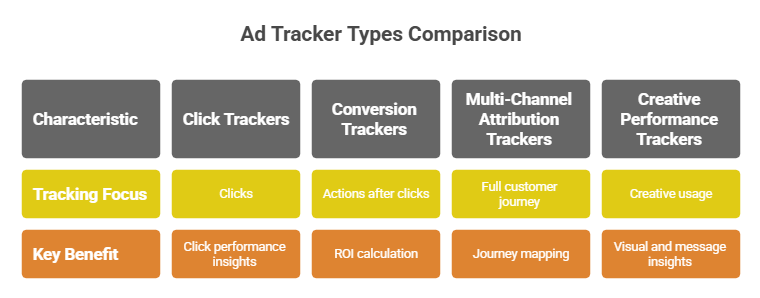
Types of Ad Trackers
There are many flavors of ad trackers, each designed for specific tracking goals. Here are the main categories:
Click Trackers
Click trackers log each time someone clicks on your ad. These tools tell you:
- Which ad variation generated the most clicks
- Which platform is driving the highest click-through rate (CTR)
- Which geographic region or device is most active
Click tracking is the first step toward understanding your funnel.
Conversion Trackers
Conversion trackers go a step further. They track not just clicks, but what happens after the click:
- Did the user make a purchase?
- Did they sign up for a newsletter?
- Did they book a demo?
These tools are essential for calculating ROI and optimizing for bottom-line performance.
Multi-Channel Attribution Trackers
Most customer journeys don’t follow a straight line. Someone might see your YouTube ad, then Google your brand, then click a retargeting ad before finally purchasing.
Multi-channel attribution trackers map the full journey. They give credit where it’s due across multiple touchpoints, helping you avoid over-attributing conversions to the last click.
Creative Performance Trackers
This is where tools like Denote shine. Instead of tracking just clicks or conversions, they track which creatives are being used, for how long, and on which platforms. This lets marketers:
- Spot top-performing visuals and messages
- Track how long each creative has been running
- Understand what kind of ads competitors are using
Creative tracking is crucial for brand differentiation and iterative testing.

Benefits of Using an Ad Tracker
If you’re still unsure whether you need an ad tracker, here are the benefits laid bare:
Optimize Budget with Real-Time Data
Waiting until the end of the month for campaign results is no longer necessary. With access to real-time analytics from ad trackers, you can promptly assess performance and make informed decisions—whether that means pausing underperforming ads, adjusting strategies, or allocating additional resources to successful campaigns. This immediacy enhances strategic agility and overall effectiveness.
Measure ROI Accurately
Return on investment (ROI) is a widely valued metric, yet without precise tracking, any conclusions drawn are largely speculative. Ad trackers serve as essential tools, systematically connecting advertising expenditures to measurable outcomes. This enables marketers to present substantiated, data-driven results rather than relying on assumptions.
Improve Ad Creatives Based on Performance
Identifying which visuals or headlines resonate most with audiences is a process rooted in ongoing experimentation and analysis. Tools such as Denote streamline this by automating testing procedures, enabling continuous refinement based on real-time performance data. This not only enhances efficiency but also supports evidence-based decision-making in content optimization.
Avoid Ad Fraud and Bot Traffic
Ad fraud results in substantial financial losses for marketers each year, amounting to billions of dollars globally. Effective tracking tools are essential in identifying suspicious activity—such as repeated clicks originating from a single IP address or anomalously high bounce rates. By monitoring these irregularities, organizations can avoid allocating budget to fraudulent, non-human traffic.

Best Ad Tracking Tools in 2025
With hundreds of options out there, these are the ad tracking tools we recommend in 2025:
Denote — Creative and Competitor Ad Tracker
Denote takes a different approach. Instead of tracking your own clicks, it tracks the ad creatives of your competitors across platforms like TikTok, Facebook, and Google. It’s like having a backstage pass to your competitor’s marketing playbook.
You can monitor creative lifespan, trends, and placement strategies — making it an ideal companion to traditional ad trackers.

Google Ads Conversion Tracking
Utilizing Google Ads without this integrated tracker is, quite frankly, imprudent. It is essential for delineating precise conversion actions—whether purchases, registrations, or form submissions—and meticulously monitoring each one. This functionality ensures that advertisers gain a comprehensive understanding of their campaigns’ effectiveness.
Facebook Pixel
Despite ongoing shifts within digital marketing, this remains one of the most effective instruments for retargeting and audience cultivation. By 2025, it is seamlessly integrated across Meta’s entire ecosystem, including Facebook, Instagram, and Threads.
Common Mistakes to Avoid with Ad Trackers
Even the best tools can be rendered ineffective if used poorly. Here are common pitfalls marketers fall into:
Misconfigured Tags
A misfired tag is essentially equivalent to attempting to record audio with an unplugged microphone—no data is captured whatsoever. It is crucial to thoroughly test tracking tags prior to deployment. Utilizing diagnostic tools such as Google Tag Assistant is recommended to ensure proper configuration and functionality, thus preventing the loss of valuable analytics.
Inconsistent UTM Usage
When teams lack consistency in their UTM naming conventions, the resulting reports tend to be disorganized and difficult to interpret. It is essential to adopt and adhere to a standardized format for parameters such as source, medium, campaign, and content. This approach ensures the data remains coherent and facilitates accurate analysis.
Ignoring Multi-Touch Attribution
Attributing conversions solely to the last click is akin to assigning all credit for a successful meal to the server, while disregarding the essential roles played by the chef, the farmer, and the delivery personnel. In reality, each participant contributes significantly to the outcome. Multi-touch attribution provides a comprehensive perspective, recognizing the various interactions and influences that collectively drive users toward conversion.
Setting Up Your First Ad Tracker
Let’s walk through how to set up a basic ad tracking system from scratch.
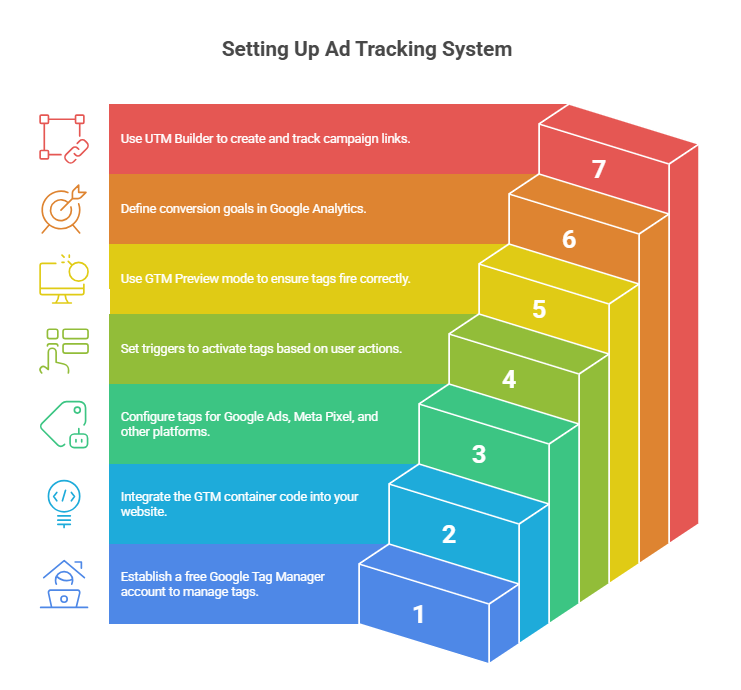
Step-by-Step with Google Tag Manager
- Create a free Google Tag Manager account.
- Add the GTM container code to your website.
- Set up tags (like Google Ads, Meta Pixel, etc.).
- Use triggers to define when tags should fire (e.g., on button click, form submit).
- Test using GTM Preview mode.
Setting Goals in Google Analytics
- Go to Admin > Goals > New Goal.
- Choose a template (e.g., Purchase, Sign-up).
- Define your destination URL or event trigger.
- Link your goal to ad accounts for conversion tracking.
Tracking Links with UTM Builder
Use Google’s Campaign URL Builder or tools like Bitly:
- Fill in campaign source, medium, name, and content.
- Copy and paste the generated link into your ads.
- Monitor performance in Google Analytics under "Acquisition > Campaigns."
Conclusion
In 2025, navigating digital advertising without an ad tracker is like sailing without a compass. Whether you're optimizing ROAS, battling ad fraud, or decoding which creative hits hardest — tracking is your north star.


